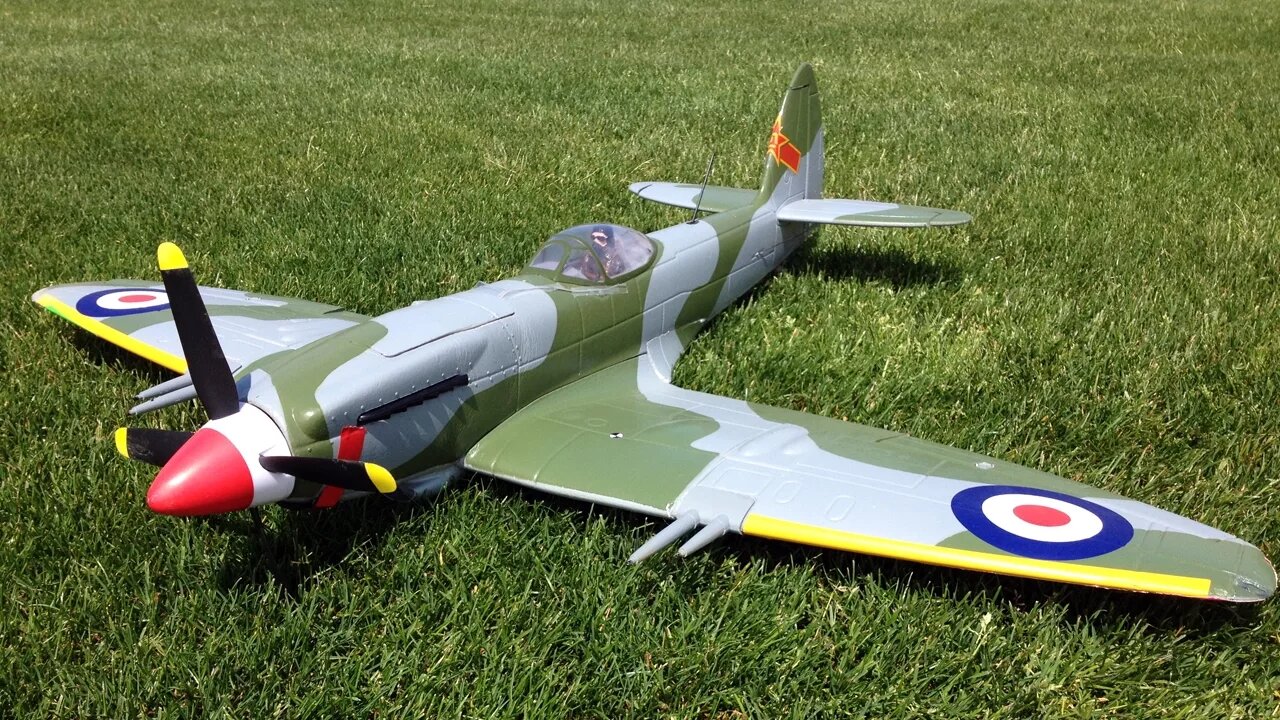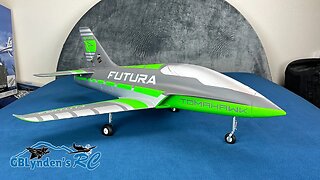Premium Only Content

RC Plane Crash - HobbyKing Durafly MK-24 Spitfire WWII Warbird Explodes on Impact!
To celebrate crossing 2,000 subscribers I am uploading this RC Plane Crash video of my buddy Bill crashing his beautiful HobbyKing Durafly MK-24 Spitfire WWII Warbird. To date, it is the most devastating crash I have ever uploaded on my channel, complete with sound on impact that will make you cringe. It is sure to be the highlight of one of my future RC Plane Crash Compilation videos. Who doesn't love a good RC Crash video?
I know a lot of you might expect an E-flite P-47 flight or a new E-flite P-51 Mustang video, but I have been grounded due to unflyable wind lately and this is a video I have been saving for just such a celebration.
Thanks again to Bill along with his Hobby King Spitty and everyone else who has helped support this channel so far! Those also include but aren't limited to John, Joy, Tasha, Shawn, and Marissa to name a few that have helped work behind the camera!
Here's to 2,000 more friends joining us!!! :)
GB
Now here is some history to enjoy regarding this Supermarine Spitfire, which is the MK-24 Spitfire variant according to Wiki:
The final Spitfire variant, the Mk 24 Spitfire, was similar to the Mk 22 Spitfire except that it had an increased fuel capacity over its predecessors, with two fuel tanks of 33 gal (150 l) each installed in the rear fuselage. There were also zero-point fittings for rocket projectiles under the wings. All had the larger "Spiteful" tail units: modifications were also made to the trim tab gearings in order to perfect the F Mk 24's handling characteristics. The F Mk 24 achieved a maximum speed of 454 mph (731 km/h), and could reach an altitude of 30,000 ft (9,100 m) in eight minutes, putting it on a par with the most advanced piston-engined fighters of the era.
Although designed primarily as a fighter-interceptor aircraft, the Spitfire proved its versatility in several different roles. In fighter configuration the F Mk 24's armament consisted of 4 × short-barrelled Mk.5 20 mm Hispano cannon – operational experience had proved that the hitting power of these larger weapons was necessary to overcome the thicker armoured plating encountered on enemy aircraft as the war progressed. The aircraft also served successfully in the fighter-bomber role, being capable of carrying 1 × 500 lb (230 kg) and 2 × 250 lb (110 kg) bombs, with rocket-projectile launch rails fitted as standard. Late production aircraft were built with the lighter, short-barrelled, electrically fired Mark V Hispano cannon.
A total of 81 Mk 24s were completed, 27 of which were conversions from Mk 22s. The last Mk 24 to be built was delivered in February 1948. They were used by only one RAF Spitfire squadron, 80 Squadron, until 1952. Some of the squadron's aircraft went to the Hong Kong Auxiliary Air Force where they were operated until 1955.
Introduced into service in 1946, the F Mk 24 differed greatly from the original Spitfire Mk I in many respects and was twice as heavy, more than twice as powerful and showed an increase in climb rate of 80% over that of the prototype, 'K5054'. These remarkable increases in performance arose chiefly from the introduction of the Rolls-Royce Griffon engine in place of the famous Merlin of earlier variants. Rated at 2,050 hp (1,530 kW), the 12-cylinder Vee liquid-cooled Griffon 61 engine featured a two-stage supercharger, giving the Spitfire the exceptional performance at high altitude that had been sometimes lacking in early marks.
-
 5:51
5:51
GBLynden's RC
1 year agoDetailed Unboxing | FMS Futura 64mm EDF Sport Jet
276 -
 1:07:05
1:07:05
TruthStream with Joe and Scott
1 day agoMorocco, Fix The World Project, EMF Protection, Camels and more! Premiers 10/22 All links below!! #502 Premiers 10/22 3pm pacific 6pm Eastern
76.6K11 -
 1:41:55
1:41:55
MattMorseTV
1 day ago $29.82 earned🔴Trump meets with GOP Senators over SHUTDOWN. 🔴
31.7K64 -
 24:23
24:23
Nikko Ortiz
2 days agoArmy Officers Might Need Help...
31.8K15 -
 6:14
6:14
Dr Disrespect
1 day agoDr Disrespect Goes for 100 KILLS in Battlefield 6
99.9K12 -
 18:28
18:28
GritsGG
14 hours agoINSANE 50 Bomb! Warzone's Most Winning Player FRIES Bot Lobby!
8.95K1 -
 LIVE
LIVE
Lofi Girl
2 years agoSynthwave Radio 🌌 - beats to chill/game to
158 watching -
 56:38
56:38
DeProgramShow
5 days agoDeprogram with Ted Rall and John Kiriakou: "Jake Tapper on the Global Hunt for an Al Qaeda Killer”
73.9K9 -
 3:44:21
3:44:21
FreshandFit
13 hours agoWhat Can These Women Give A Man That They've Never Given Before? ft. Surprise Guests
253K73 -
 2:29:28
2:29:28
Badlands Media
16 hours agoDevolution Power Hour Ep. 400: The 400th Episode Celebration – Trump’s Gamble, Biden’s Fall, and the Great American Reckoning
84.6K41